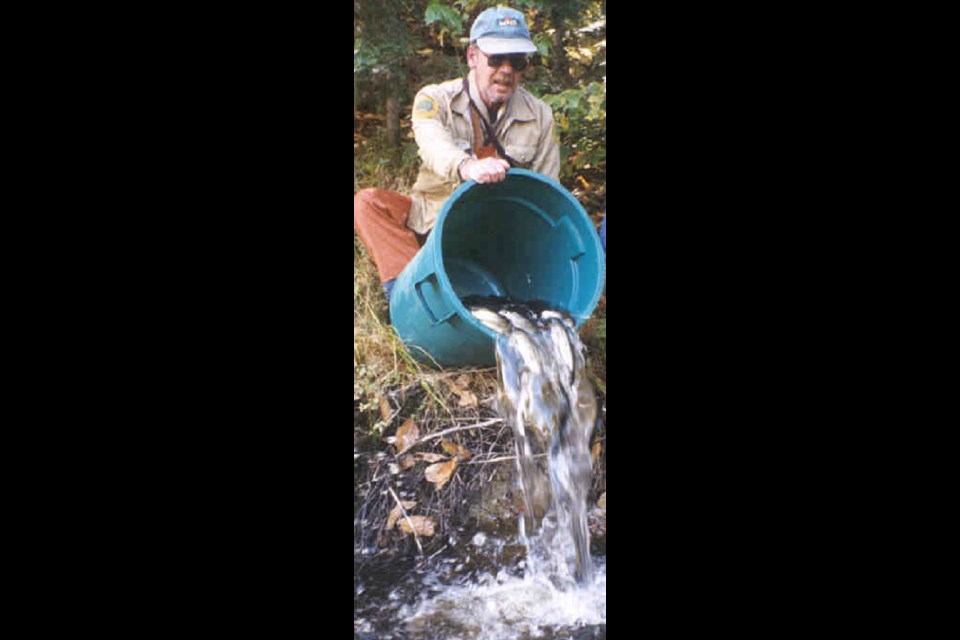The local Natural Resources ministry office has added Atlantic salmon stock to Four Mile Creek for the first time since 1995, baytoday.ca has learned.
MNR personnel poured 1,800 fall fingerlings and 1,100 fall yearlings into the creek Oct. 2, said senior technical specialist Steve Belfry.
“The salmon spawn in the creek before going into Trout Lake, so we’re trying to boost up what’s already there,” Belfry said.
“What our goal would be is to have a decent little run of salmon every year because right now we only have them coming up to spawn intermittently, so we’re trying to fill that gap by doing this.”
Very few people catch them
The fish for the stocking came from the White Lake fish culture station near Pembroke. The yearlings averaged 124 grams in weight, and the fingerlings six grams.
Belfry said the goal of the program is to create a “unique” fishery in the North Bay area.
There’s a short salmon fishing season on Trout Lake already, Belfry said, opening the third Saturday in June and continuing for only one week after that.
“Very few people do catch them, but once in a while you’ll snag one on your line although they’re not very thick out there,” Belfry said.
“But if you do catch them they’re quite acrobatic and will fly up into the air.”
Recovered from zinc spills
While Atlantic salmon haven’t been a naturally occurring species in Trout Lake, they do have a history in Ontario.
In the middle of the last century, Belfry said, the Ontario government stocked lakes around the province with the fish.
“It didn’t work well and the fish died out, with the exception of Trout Lake and Four Mile Creek,” Belfry said.
Then in the 1970s, he added, “there were a couple of zinc spills” into the creek.
“Most Atlantic salmon don’t like zinc and they stopped coming upstream to spawn,” Belfry said.
The stream eventually recovered from the spills and the province added more salmon stock around 1990, Belfry said.
“After the fish were put back into the creek in the early to mid-‘90s, we just sat back and waited to see what would happen with their spawning,” Belfry said.
”We’d be looking for a spawning run every year and we’d have one good year and three bad years, for example, waiting to see if natural reproduction would develop.”
Trickling back to stream
Atlantic salmon take four years to mature and reach reproductive age, Belfry said, and a small amount are trickling back to Four Mile Creek to spawn.
And those numbers could increase as successive generations of the fish develop inherent memory of and a homing instinct for the creek, Belfry said.
The MNR clipped one fin from each fish before putting them into the creek to help in identification in the future.
Belfry acknowledges, though, that Atlantic salmon aren’t likely to become abundant in Trout Lake.
“We don’t really have a large enough spawning stream for that,” Belfry said, “so numbers will remain quite limited.
Join BayToday+
- Messages
- Post a Listing
- Your Listings
- Your Profile
- Your Subscriptions
- Your Likes
- Your Business
- Support Local News
- Payment History
BayToday+ members
Already a +member?
Not a +member?
Sign up for a BayToday+ account for instant access to upcoming contests, local offers, auctions and so much more.
